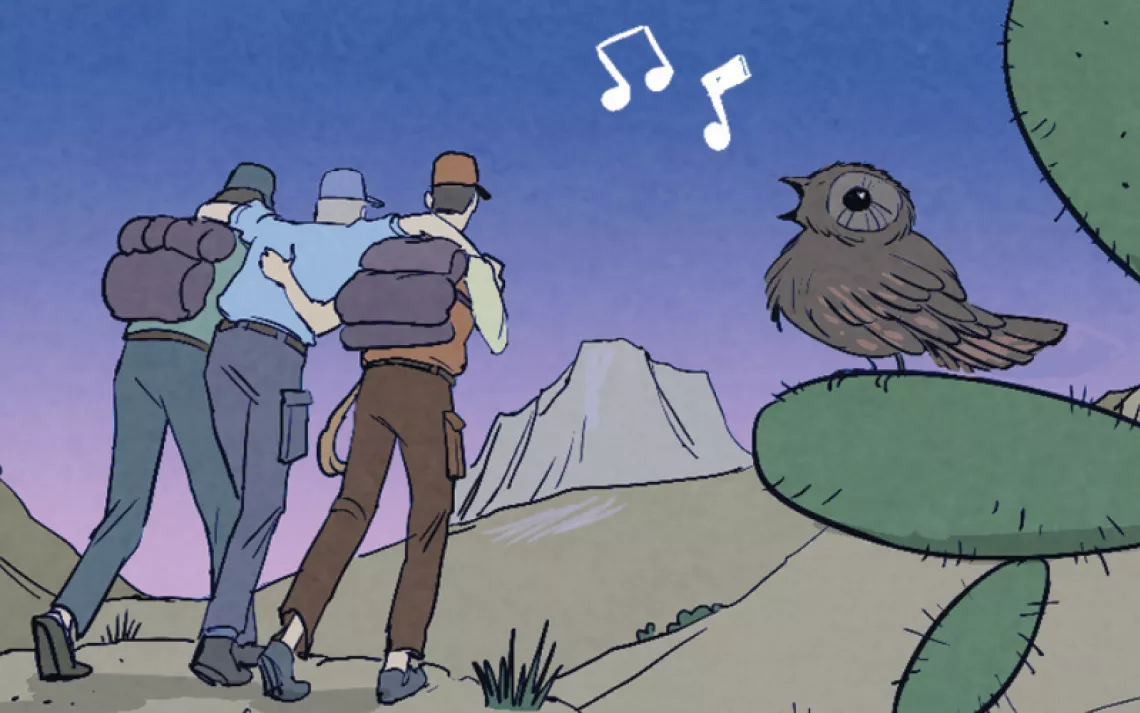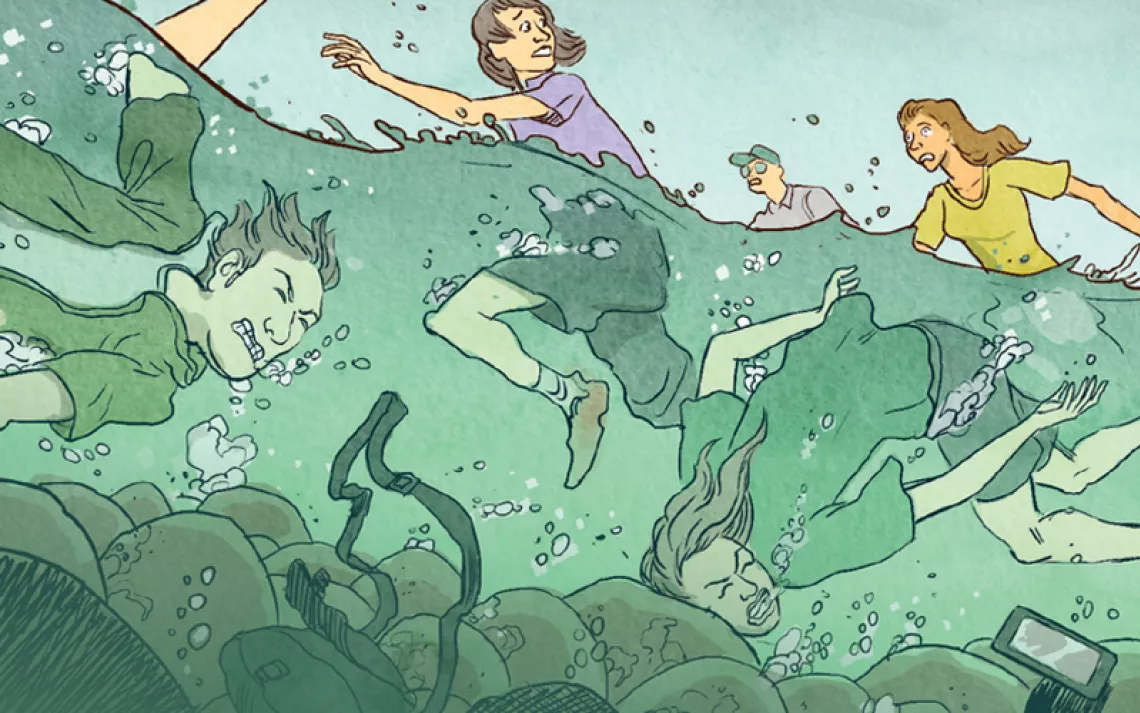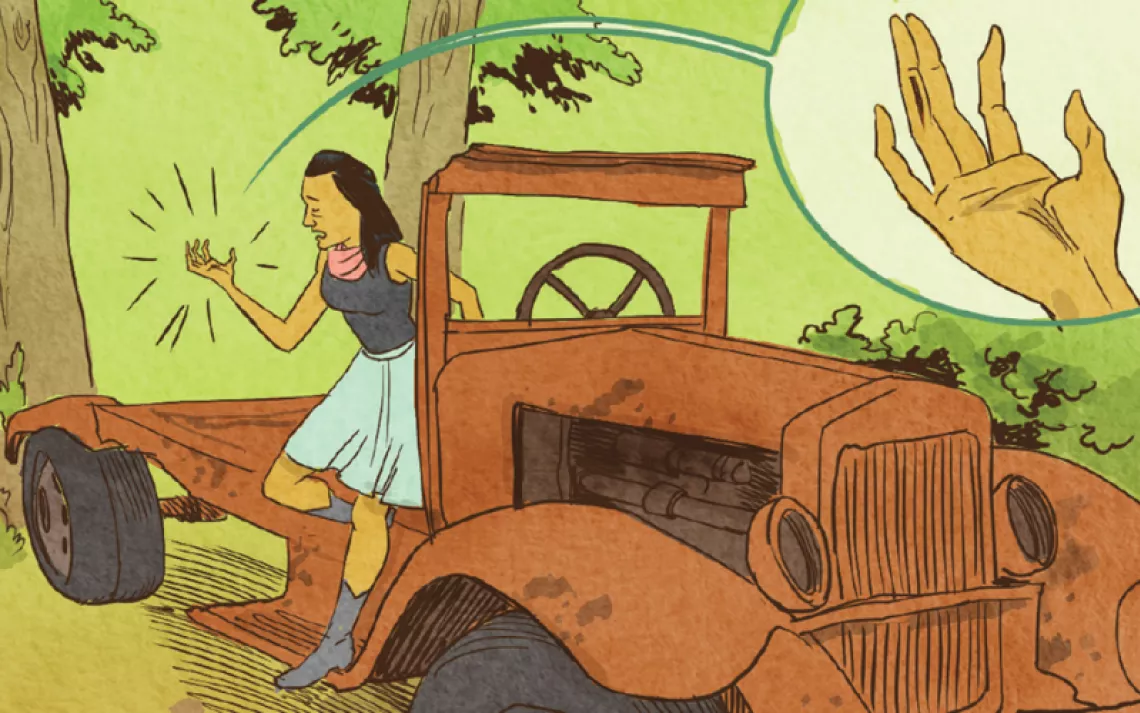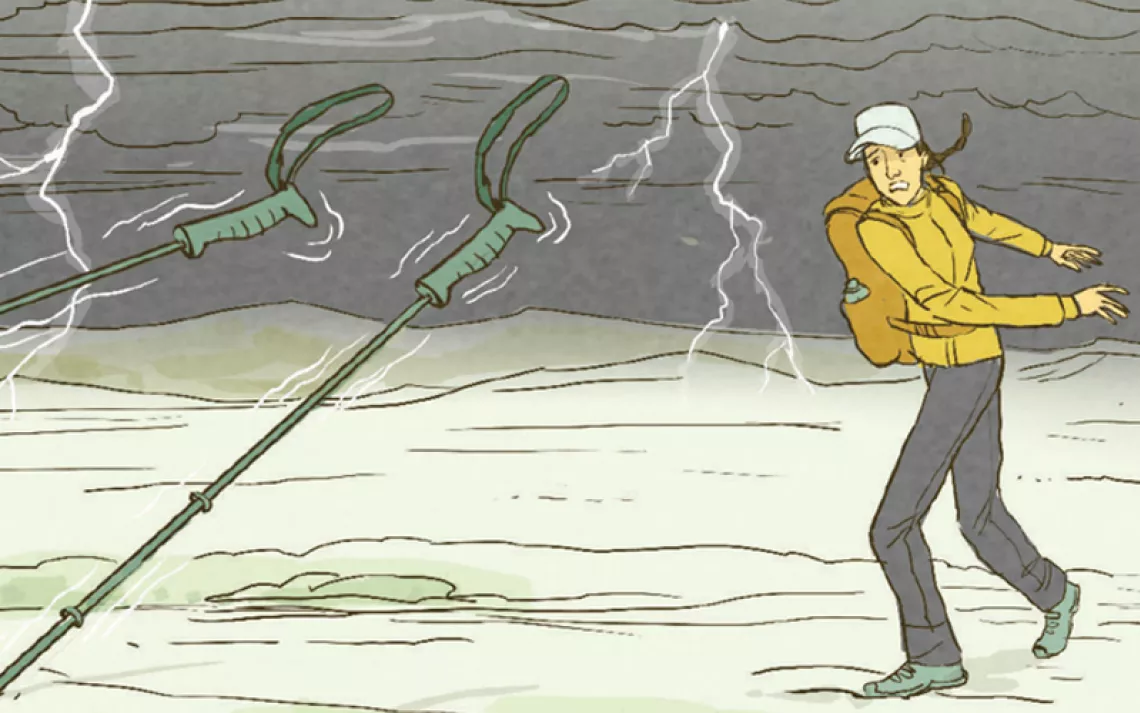You're Plummeting Down a Mountain—Now What?
Of course the time you don't bother to get out your ice ax is when you fall
I was more than 1,100 miles into my thru-hike of the Pacific Crest Trail when I came to a lingering finger of slush blocking the trail in the Granite Chief Wilderness. It would take longer to put on my crampons and unstrap my ice ax, I thought, than to just walk across.
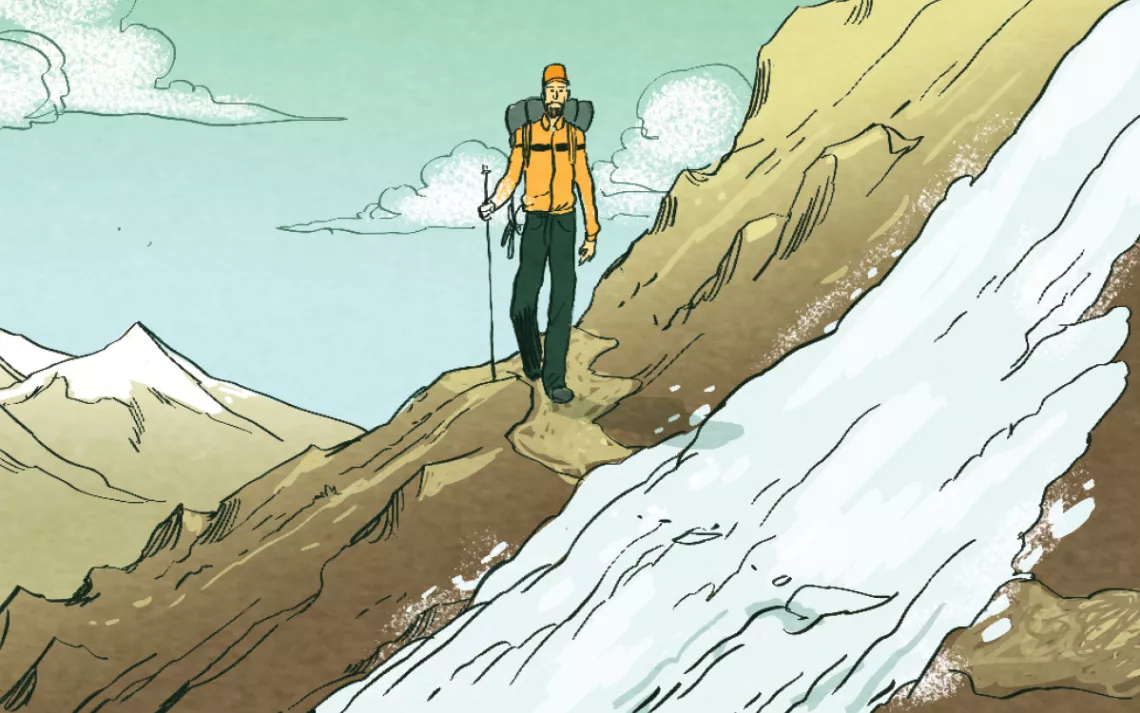
After a month of slow progress, I was eager to make up lost time. I took a few cautious steps in the deep wells left by other hikers. I was halfway across . . .
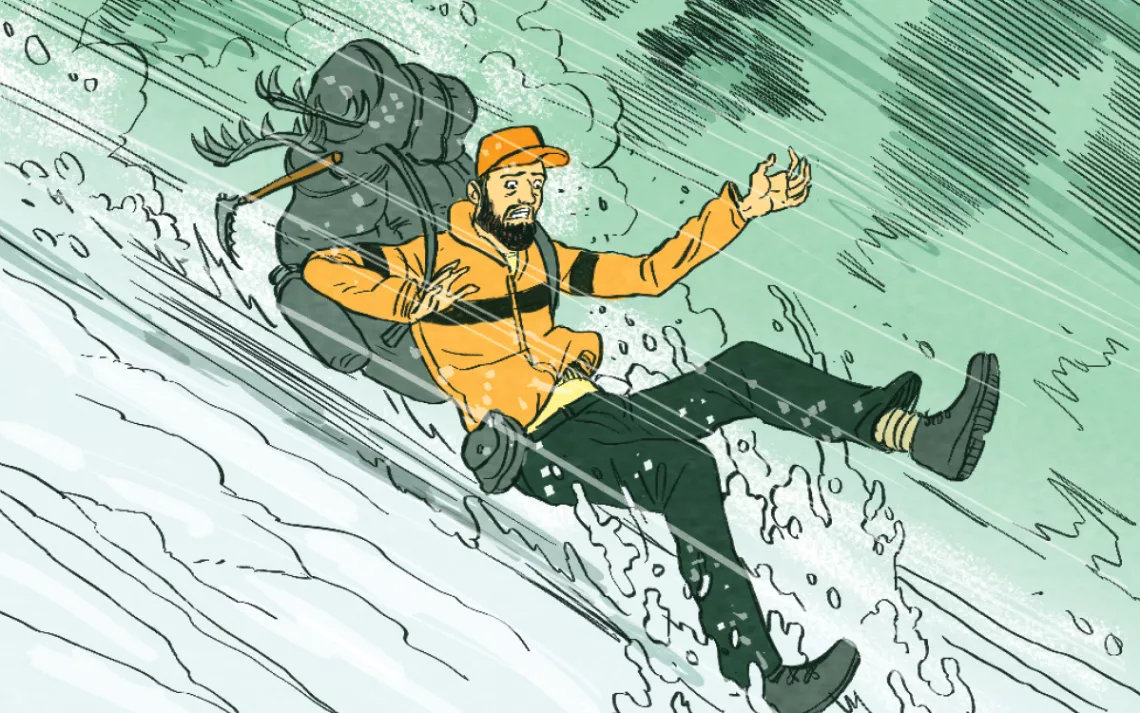
. . . Then I was halfway down the slope. My foothold had given out. "Of all the things to get me," I thought as I fell. "Laziness." I feared my thru-hike was over.
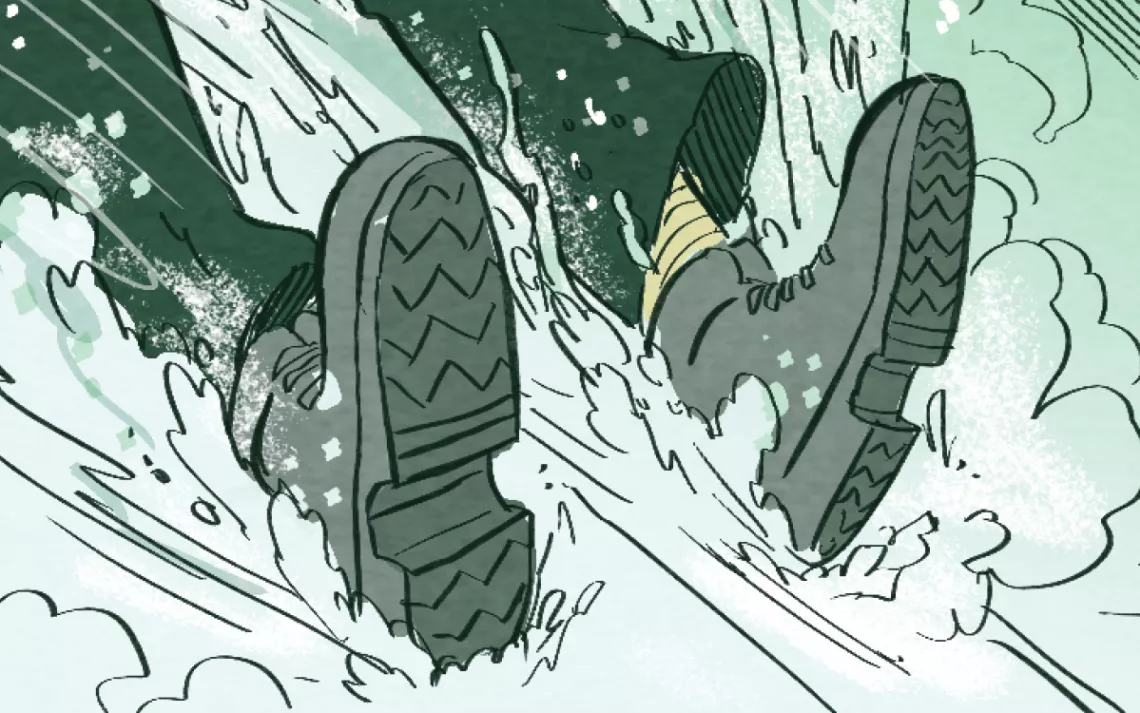
I was almost at the end of the snow ramp. Without thinking, I dug my heels into the snow as hard as I could.
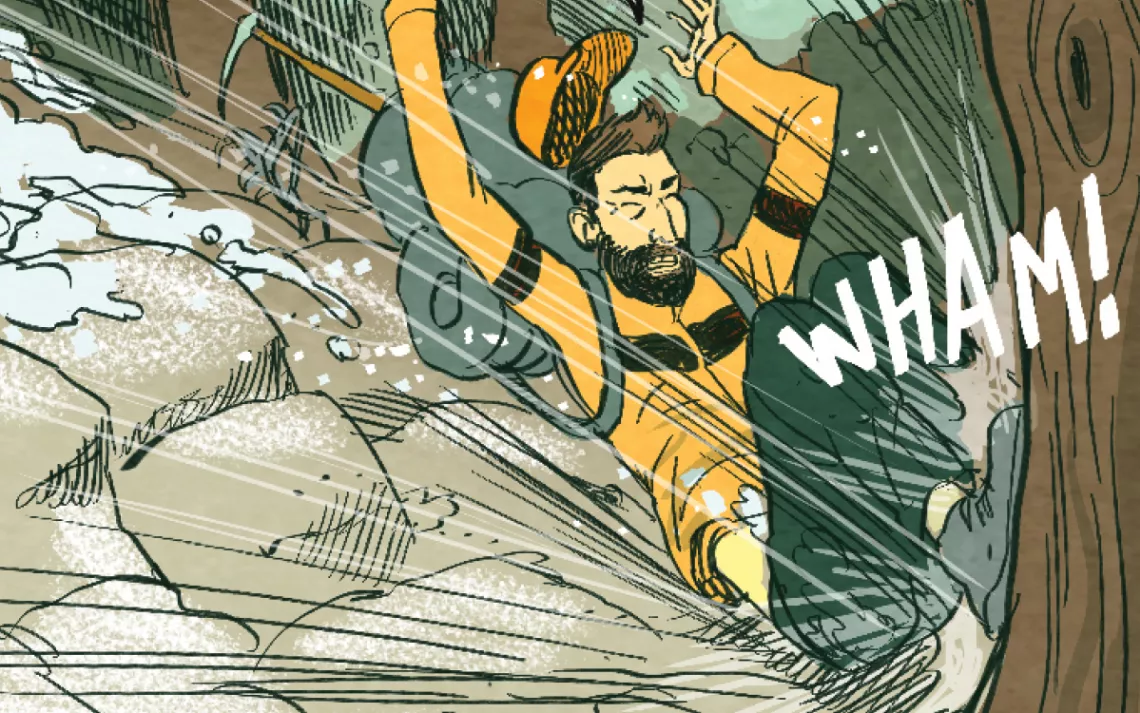
I slid over some boulders—which fortunately were flat—and into a tree, using my knees as shock absorbers.
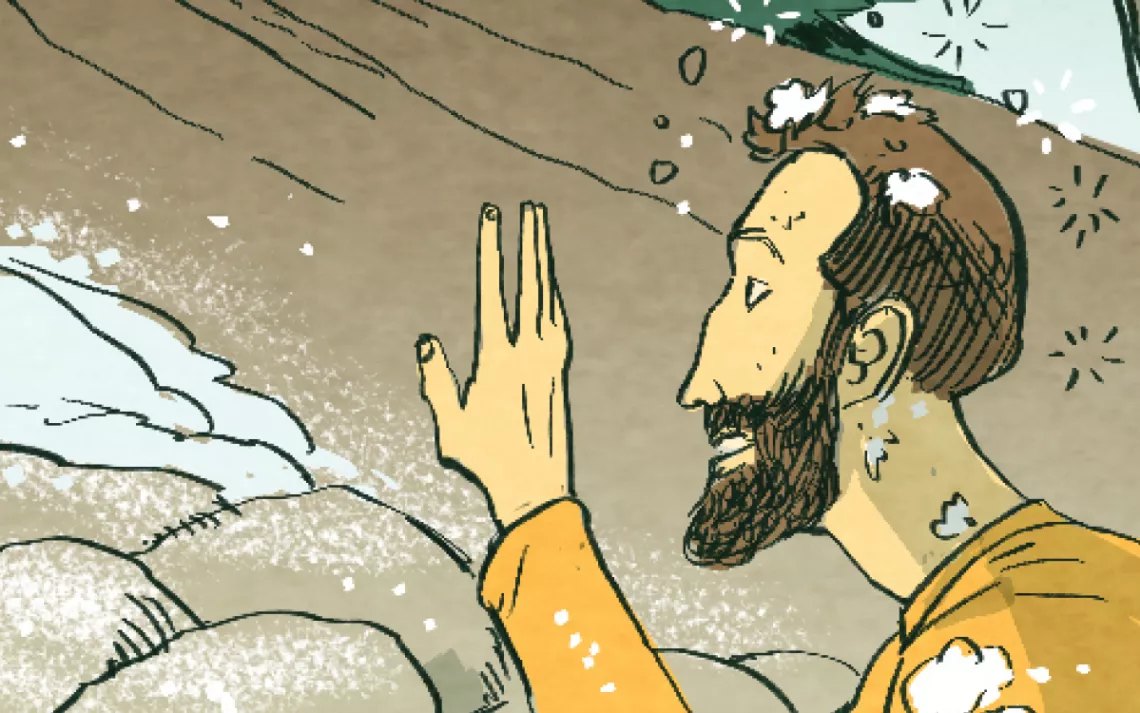
I stood up. Nothing was broken, but I got a souvenir road rash on my backside.
This article appeared in the July/August 2019 edition with the headline "Derailed Thru-Hike."
Are you a survivor? Send your tale of backcountry peril to submissions.sierra@sierraclub.org or share it with us on Facebook.
Ask the Expert
Eli Boschetto is the author of Hiking the Pacific Crest Trail: Oregon.
"No matter how big, small, or repetitive the challenge, it's always better to err on the side of caution. Accidents happen when you least expect them. Alex could have geared up in a few minutes, which would have been less time-consuming—and less painful—than his slide down the mountain and subsequent climb back up."
 The Magazine of The Sierra Club
The Magazine of The Sierra Club
